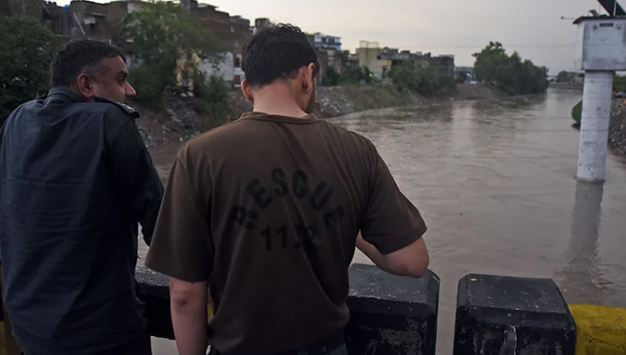ISLAMABAD, JUL 6: At least 72 people lost their lives and 130 nationals sustained injuries across Pakistan in separate incidents that occurred due to flash floods and heavy rains this monsoon season, the National Disaster Management Authority (NDMA) stated in its 10-day data.
The statistics showed the increasing number of fatalities from June 26 to July 6, with the highest number of deaths recorded in Khyber Pakhtunkhwa.
In the last 10 days, KP recorded 28 deaths, followed by 22 in Punjab, 15 in Sindh, seven in Balochistan, and four in Azad Jammu & Kashmir (AJK).
— NDMA
— NDMA
It included six rain-related deaths in the past 24 hours, including four from KP and two from Sindh, whereas a total of 3 people were injured in separate incidents of flash floods, house collapse, lightning, and drowning.
At least 161 houses were damaged and 91 livestock were swept away in the monsoon spells. During this period, the emergency response agency conducted 19 rescue operations and rescued 233 persons, besides distributing essential items to the affected nationals.
As monsoon activity is expected to intensify across the country, the NDMA’s National Emergency Operation Centre (NEOC) issued an alert regarding heavy rains and potential floods till July 10.
The alert highlighted potential river and stream overflows across multiple regions, including Punjab, Sindh, Balochistan, Khyber Pakhtunkhwa, AJK, and Gilgit-Baltistan. In particular, low-level flooding is expected at Marala and Qadirabad points on the Chenab River.
Major rivers, including Indus, Chenab, Swat, Panjkora, Chitral, Hunza, and various local waterways, may witness rising water levels, the NDMA stated, adding that flash floods are also feared in northeastern Punjab, especially in streams originating from the Pir Panjal mountain range.
In AJK, the Jhelum River and its tributaries may be flooded, while Gilgit-Baltistan may witness increased water flow in the Hunza River and surrounding streams.
In southern Balochistan, flood risks are associated with streams flowing from the Kirthar mountain range, with particular concern for Awaran, Khuzdar, Jhal Magsi, Qila Saifullah, and Musakhel districts.

















